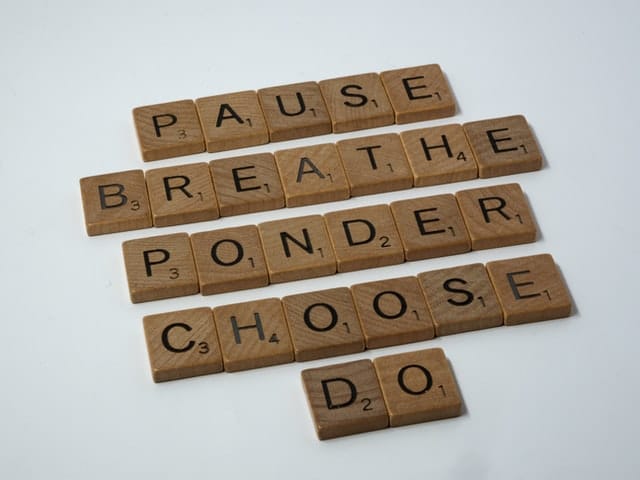The idea of managing anxiety through breathing may seem peculiar, but there are some valid reasons why implementing these simple breathing tactics to effectively tame your anxiety can have last impacts on your daily life. Regarding physiology of the human body, breathing is the only portion that we can make a mindful effort to control and regulate.
Here are some examples of portions of physiology that we cannot control:
- Modify the way our body’s digestive system works.
- Adjust your blood pressure.
- Select the locations where we would like to store fat.
- Adjust our hormone levels in the blood.
But breathing is one physiology process that we are in control of.

You can adjust speeds of breathing, intensities of each breathe, how deep or shallow we may breathe. And all of this can be altered on the fly at a moment breathe. However, we just cannot adjust how high or low we would like our blood pressure to be at any given moment, or where we may want that piece of cake to be stored on our body.
Your breathing has a boundless influence on your physiology.
By utilizing our intentions with our breathing, this can lead to a more effective way of managing your anxiety. Most important, this will be the most cost-effective treatment that you can ever find. There are advanced trained mental health therapists who specialize solely on Mindfulness Based methods to help conquer anxiety.
Follow these simple breathing tactics to effectively tame your anxiety:

- Find Your Balance in Your Breath. This procedure is nothing new, as this has been in practice for centuries all around the world.
- Gently shut your eyes and assess what is your normal pattern of breath. Take note how long you spend with each breathe in and out. Start by completing this for a 2 to 3 minutes at first.
- Next, slowly count from one to four as you take a deep breathe in through your nose. It is perfectly fine to mouth breathe if you happen to have stuffiness or difficulties with breathing through your nose.
- Perform the same pattern of breathing on the way out with the same focus on every breathe.
- It is important to make sure we are focusing on performing equal breathes in and out, as this is not intended to be overly exerted. The goal is to help you control your body.
- This can be performed for 5 to 10 minutes to start. Do not get frustrated if this is challenging to you, as we live in a world that is constantly moving around us, so if you feel that you are losing focus, reset and start back again. It will take practice to re-program yourself to focus on yourself.
- Gently shut your eyes and assess what is your normal pattern of breath. Take note how long you spend with each breathe in and out. Start by completing this for a 2 to 3 minutes at first.
- Hold That Exhale. This is an excellent technique for breathing if you happen to have a sudden increase in feeling anxious. This will help to aid in the prevention of us hyperventilating in challenging circumstances.
- Step 1: Try and hold out your exhale for as long as you can. Attempt to push out as much air as you can without making yourself more stressed.
- Next, try to relax and allow the air fill back into your lungs naturally. This can simply be achieved trying to remain relaxed. Our focus on inhaling is less important in this step. If you have exhaled as much air as you could, your lungs will fill with air if you just continue to remain relaxed. This could be done up to five minutes at a time. This is a great tool to help also lower our heart rate when active!
- After you have completed Step 1, try, and move on to Step 2 for the next three to five minutes:
- Part 2: Exhaling twice if you are inhaling. Start with three to four seconds on your inhale, and six to eight seconds on your exhale. This can be progressed by adding more time on once you get better control of you breathe.
- Step 1: Try and hold out your exhale for as long as you can. Attempt to push out as much air as you can without making yourself more stressed.
- Let That Belly Breathe. This tactic is the most widespread breathing technique out there to help improve our feelings of well-being.
- First, find a comfortable place to lay down and place one or both hands on your stomach.
- Try and take a full, deep breath in and hold it for a short duration of time. You should see your stomach rise, but little to no movement of your ribs and chest while doing so. You can play around with the length of time on these breathes.
- Think of our forced exhalation exercise, now we are going to flip it for inhalation, with will allow your body to naturally release the air out of your mouth. You are just focusing on being in the moment with each breath and allowing your body to naturally release.
- This is another exercise than can be starting in the five-to-ten-minute range but expanded or reduced to your comforts.

- Let Those Nostrils Dance! This is another method that is incorporate in yoga practices that individuals tend to have a love/hate relationship with. It tends to be a little more challenging, which sometimes can cause distractions away from our what we may be doing. This is unbelievably valuable if you happen to require a break away from focusing on your anxiety.
- While breathing as normal as possible, attempt to use only one nostril at a given time. Try and gently block off one nostril, and then practice your breathing patterns through the open nostril.
- After one full cycle of breathing has been completed, block off your other nostril and repeat with the other nostril.
- This process can be incorporated with all the techniques listed above. Check it out and assess which techniques work better for you.
These are just a few simple breathing tactics to effectively tame your anxiety in your daily life. How you breathe can have a wonderful influence on your body, both physically and mentally. Practice to learn how to use your breath to your benefit. You may be holding a valuable tool to help begin the journey of conquering your anxiety.




